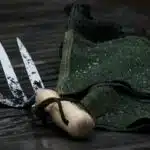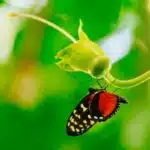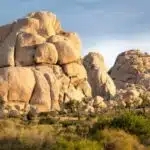Wetlands are some of the most biologically productive and diverse ecosystems on the planet. They act as a natural filter for water, provide habitat for countless species, and support human livelihoods. However, not all plants can thrive in the unique conditions found in wetlands, especially in areas with standing water or low oxygen levels. As wetland horticulturists, our goal is to identify and cultivate plant species that are well-suited to these challenging environments.
One of the key factors that we consider when selecting plants for a swampy area is their ability to tolerate waterlogged soils. To survive in this type of environment, plants must be adapted to live with limited oxygen availability at their roots while still being able to absorb nutrients from the soil. Additionally, they must be able to withstand periodic flooding events and fluctuating water levels. In this article, we will explore some of the best plant choices for swampy areas and discuss how they can help enhance the ecological health and beauty of wetland landscapes.
The Importance Of Wetland Ecosystems
Wetland conservation is crucial in today’s world due to the increasing biodiversity loss. Wetlands provide a unique ecosystem that supports various plant and animal species, some of which are endangered. They also play a significant role in regulating water cycles, filtering pollutants, and reducing the impact of natural disasters such as floods. Therefore, it is essential to understand the importance of wetland ecosystems and their contribution to the environment.
Biodiversity loss is one of the most pressing environmental issues globally, with wetlands being particularly affected. Factors such as climate change, urbanization, and agricultural practices have contributed to the destruction of these ecosystems. This has resulted in the loss of many plant and animal species that rely on wetlands for habitat and food. The conservation of these ecosystems is vital to protect endangered species and maintain ecosystem services.
Wetland horticulturists play a crucial role in promoting wetland conservation by understanding how plants grow in swampy areas. They study different plant species’ growth requirements and find ways to propagate them sustainably without harming the environment. By doing so, they help create habitats for various wildlife species while maintaining ecosystem services such as water purification and flood control. Understanding swampy environments is critical for effective wetland management, which can contribute significantly to biodiversity conservation efforts worldwide.
Understanding Swampy Environments
Understanding wetland ecology is crucial for those who plan to cultivate plants in swampy areas. Wetlands are unique ecosystems that provide numerous benefits, such as filtering pollutants from water, providing a habitat for wildlife, and preventing flooding. However, they are also delicate environments that require specific conditions to thrive. Horticulturists must take into account these factors when selecting plants for these areas.
One of the most important characteristics of plants that thrive in wetlands is their ability to tolerate saturated soil. The roots of these plants are adapted to absorb nutrients and oxygen from waterlogged soils. Additionally, these plants can survive in flooded conditions for extended periods without drowning. Examples of such plants include cattails, sedges, and marsh marigold.
Another characteristic of successful wetland plants is their tolerance for low-nutrient soils. Wetlands often have poor soil quality due to high levels of organic material and constant saturation. Plants that have adapted to these conditions can obtain nutrients through symbiotic relationships with bacteria or by breaking down organic matter themselves. Some examples of such plants include skunk cabbage, ferns, and pitcher plant.
Preserving wetlands is beneficial not only for the environment but also for human society as a whole. These ecosystems provide essential services such as water purification, carbon sequestration, and flood control. By understanding the ecology of these systems and selecting appropriate plant species, horticulturists can contribute to preserving these vital habitats while also creating beautiful gardens and landscapes that serve both aesthetic and functional purposes. In the subsequent section about ‘characteristics of plants that thrive in wetlands’, we will explore further how horticulturists can select suitable plant species for swampy areas based on their adaptability to environmental conditions.
Characteristics Of Plants That Thrive In Wetlands
Wetlands are unique ecosystems that are characterized by their waterlogged soils. Plants that thrive in wetland areas possess a range of adaptations that enable them to tolerate the constantly saturated conditions. Wetland plants have evolved specialized root systems that can absorb oxygen from the soil or water, and they can also store air in their tissues to help them float. Additionally, these plants have developed mechanisms for dealing with excess salt, which is often present in wetland soils.
When considering plant species for swampy areas, it’s important to take into account the type of wetland community present. Each wetland community has unique environmental conditions, such as water depth and nutrient availability, which will influence the types of plants that can grow successfully. Some common wetland plant communities include marshes, swamps, and bogs. Marshes typically have shallow water levels and high nutrient availability, making them ideal habitats for grasses and sedges. Swamps tend to have deeper water levels than marshes and are dominated by woody vegetation like trees and shrubs. Bogs are acidic wetlands that receive most of their nutrients from precipitation; these environments support unique plant communities such as sphagnum mosses.
In addition to selecting plant species based on the specific characteristics of a given wetland community, it’s also important to choose native plant species whenever possible. Native plants are adapted to local conditions and will require less maintenance than non-native species. They also provide important ecosystem services such as food and habitat for wildlife, erosion control, and water filtration. By choosing native plants for swampy areas, we can help preserve these valuable ecosystems while also creating beautiful landscapes that serve both humans and nature alike.
To ensure successful establishment of native plant species in swampy areas, careful planning is necessary. Factors such as soil type, moisture levels throughout the year, sun exposure, drainage patterns should be considered when selecting appropriate species for planting projects. With proper planning and implementation, native plant species can be an effective and sustainable way to manage swampy areas while promoting biodiversity and enhancing the beauty of our natural landscapes.
Native Plant Species For Swampy Areas
Swampy areas are unique ecosystems that require specialized plant species to thrive. Wetland horticulturists recommend using native plant species in swampy areas due to their adaptation to the local climate, soil type, and natural water availability. Native plants have co-evolved with the local environment and are therefore better suited for long-term growth and survival.
Native plant propagation is an effective technique for restoring and maintaining swampy areas. Propagation involves growing new plants from seeds, cuttings, or division of existing plants. This technique ensures that only locally adapted plants are introduced into the ecosystem, reducing the risk of invasive species colonization. Wetland horticulturists recommend selecting plant species according to their ecological role in the ecosystem, such as food source for wildlife or erosion control.
The following table provides a list of native plant species suitable for swampy areas:
| Plant Species | Ecological Role | Water Tolerance |
|---|---|---|
| Cattails | Erosion Control | High |
| Sedges | Habitat Provider | High |
| Swamp Milkweed | Pollinator Attractor | Medium |
| Blue Flag Iris | Aesthetics and Wildlife Habitat | Low |
| Marsh Marigold | Soil Stabilization | High |
Wetland restoration techniques aim to repair or enhance degraded wetlands’ ecological functions through the introduction of native plant species. The use of native vegetation promotes biodiversity, enhances water quality by absorbing pollutants and excess nutrients while reducing flooding risks, and provides habitat for various fauna species. Restoration projects involving native plant propagation require careful planning and monitoring to ensure their success in stabilizing wetland ecosystems.
The next section will discuss non-native plant species suitable for swampy areas and their potential impact on the ecosystem’s health.
Non-Native Plant Species For Swampy Areas
Non-native plant species can be beneficial in swampy areas, as they may be more tolerant of the wet soil and can provide a variety of plant life to the area. However, these plants may also become invasive and out-compete native species for resources, leading to a decrease in local biodiversity. Furthermore, non-native species may also be less palatable to local fauna, reducing the amount of sustenance available. Therefore, before introducing any non-native species to a swampy area, it is important to consider the potential impacts on the local environment.
Advantages
As a wetland horticulturist, it is important to consider the advantages of using non-native plant species for swampy areas. One advantage is that non-native plants can provide a diverse range of benefits to wetland biodiversity. They can serve as food and habitat for native wildlife, and they may also help to stabilize soil and prevent erosion.
Another advantage of using non-native plant species is that they can be used in ecological restoration techniques. By planting non-native plants in areas that have been damaged by human activity or natural disasters, we can help to restore the natural balance of the ecosystem. Non-native plants may also be more resilient to changes in climate or water levels than native species, which makes them an attractive option for restoration projects.
Overall, while there are some potential risks associated with introducing non-native plant species into swampy areas, the advantages cannot be ignored. As wetland horticulturists, it is our responsibility to carefully consider all options when working towards ecological restoration goals. With careful planning and consideration, non-native plant species may be an effective tool in restoring the health and balance of these vital ecosystems.
Disadvantages
As wetland horticulturists, it is important to consider both the advantages and disadvantages of using non-native plant species for swampy areas. While non-native plants can provide benefits to wetland biodiversity and ecological restoration projects, there are also common challenges associated with their introduction into new environments. One major challenge is the potential for these plants to become invasive and outcompete native species, disrupting the natural balance of the ecosystem.
Mitigation strategies for this risk include careful consideration of which non-native species to introduce, monitoring their growth and spread closely, and implementing management techniques such as removal or control measures if necessary. Another disadvantage of using non-native plants in swampy areas is that they may not provide the same level of benefits to native wildlife as native species do. Some non-native plants may not be suitable food sources or habitats for local wildlife, which could negatively impact their populations.
Despite these challenges, it is still possible for non-native plant species to be used effectively in wetland restoration projects. It is important for wetland horticulturists to carefully weigh the potential risks and benefits before making any decisions about introducing non-native plants into a particular area. By implementing proper mitigation strategies and considering the needs of local wildlife, we can work towards restoring healthy, balanced ecosystems that benefit both humans and nature alike.
Shrubs For Wetland Landscapes
As wetland horticulturists, we understand the importance of selecting the right plants for swampy areas. While non-native plant species may have their benefits, native shrubs are an excellent choice for incorporating into your wetland landscaping design. In this section, we will discuss the best varieties of shrubs for swampy areas, care tips, design ideas and more.
Top native shrubs that thrive in swampy areas include Buttonbush, Inkberry Holly, and Winterberry. Buttonbush is a favorite among landscapers due to its striking white flowers that bloom in summer and fall. Inkberry Holly is another popular choice due to its dense foliage and versatility in a variety of soil types. Winterberry is known for its vibrant red berries that appear in late summer and early fall.
For non-native shrubs that perform well in swampy areas, consider Red Osier Dogwood or Sweet Pepperbush. Red Osier Dogwood is a beautiful addition to any wetland landscape with its bright red stems that stand out during winter months. Sweet Pepperbush has fragrant white flowers that bloom from mid-summer through early fall.
When planting shrubs in swampy areas, it’s essential to provide them with adequate water and light conditions. Make sure to select plants that can handle standing water without drowning or rotting. Proper drainage should also be considered when designing your wetland landscape.
As you begin planning your wetland landscaping project, remember to incorporate the appropriate native or non-native shrubs based on the specific needs of your site. In the next section, we will delve into trees suitable for wetland landscapes without losing sight of our goal – creating visually stunning and sustainable ecosystems that serve both nature and humanity alike.
Trees For Wetland Landscapes
When it comes to selecting trees for wetland landscapes, there are a variety of water-loving species and flood-tolerant options to choose from. One fast-growing variety that’s commonly used is the Silver Maple, which can grow up to 3 feet per year in moist soils. Another option is the American Sycamore, which has a long lifespan and can tolerate periodic flooding.
For those looking for longer-lived options, the Bald Cypress is an excellent choice. These trees can live for hundreds of years and thrive in swampy areas with their roots submerged in water. Another long-lived tree is the Red Maple, which also offers beautiful fall foliage.
When selecting trees for your wetland landscape, it’s important to consider their growth rate, lifespan, and ability to tolerate flooding. Here are five options to consider:
- Bald Cypress
- American Sycamore
- Red Maple
- River Birch
- Black Gum
Each of these trees offers unique benefits and can help create a thriving ecosystem in your wetland landscape.
Transition into the subsequent section about perennial flowers for wetland landscapes: As important as trees are to a wetland landscape, they’re not the only plants that play a role in creating a thriving ecosystem. Perennial flowers offer another layer of diversity and provide food and habitat for pollinators and other wildlife.
Perennial Flowers For Wetland Landscapes
Trees for Wetland Landscapes have their own unique beauty and add a distinct character to the environment. However, wetlands offer more than just trees and shrubs. Perennial flowers are an excellent addition to any wetland landscape, providing a colorful and diverse display throughout the year. With adequate research and preparation, it is possible to create a beautiful garden in even the dampest of swampy areas.
Perennial planting tips include selecting plants that are tolerant of wet soil conditions. It is essential to choose plants that can thrive in moist soil without drowning or rotting their roots. Some examples of such plants include marsh marigold, cardinal flower, Joe-Pye weed, and swamp milkweed. Additionally, choose plants that can tolerate varying water levels as swamps go through seasonal changes.
When designing your perennial garden in a swampy area, it is essential to consider color combinations carefully. Best flower combinations for wetland landscapes include using light-colored flowers amidst darker foliage or utilizing complementary colors like blue and orange or red and green. By incorporating these elements into your design scheme, you can create a visually appealing landscape while also attracting wildlife such as bees, butterflies and hummingbirds to your garden.
As horticulturists of wetlands know very well how groundcovers play an important role in creating healthy ecosystems by holding the soil together with their roots while also providing habitat for many different kinds of creatures. The next section will focus on some common groundcovers suitable for growing in damp soils and how they can be used in landscaping designs for wetlands.
Groundcovers For Wetland Landscapes
Groundcovers are essential in wetland landscapes as they provide many benefits such as erosion control, water retention, and habitat for wildlife. When selecting groundcover options for swampy areas, it is important to consider plant selection criteria that can thrive in wet soils. These criteria include tolerance to flooding, adaptability to low nutrient levels, and resistance to diseases and pests.
One of the best groundcover options for swampy areas is the Virginia creeper (Parthenocissus quinquefolia). This plant thrives in moist soil conditions and has a high tolerance for flooding. It also has deep roots that help stabilize soil against erosion. Another option is the wild ginger (Asarum canadense), which prefers shady and damp environments. It has an attractive foliage that adds texture and color to any landscape design.
Lastly, the winterberry holly (Ilex verticillata) is a great choice for swampy areas due to its tolerance to wet soils and low nutrient levels. This deciduous shrub produces red berries in winter, providing food for birds during harsh winters. When selecting groundcovers for wetland landscapes like swamps, it is important to consider plant selection criteria that can thrive in these unique environments.
The next step in creating a diverse and thriving wetland landscape is choosing aquatic plants that can tolerate swampy conditions. These plants are essential as they provide oxygenation, filtration, and habitat for aquatic wildlife. By carefully selecting the right mix of groundcovers and aquatic plants, you can create a beautiful landscape that supports both human needs and environmental sustainability.
Aquatic Plants For Swampy Areas
Transition: Now that we have discussed groundcovers for wetland landscapes, let us move on to the selection of aquatic plants that will thrive in swampy areas. As a wetland horticulturist, it is important to choose the right plant species that can adapt to the constantly changing water levels and soil conditions.
Plant selection is crucial when designing a successful swampy garden or landscape. Some of the most common plants found in swamps include cattails, sedges, ferns, and rushes. These plants are well adapted to areas with high humidity and waterlogged soil. Other popular options include water lilies, pickerelweed, and arrowheads. It is important to consider the location of the wetland area, as some plants may require partial or full sun exposure.
Maintenance tips are essential for ensuring healthy growth of wetland plants. It is important to regularly monitor soil moisture levels and ensure proper drainage. Dead leaves and debris should be removed from the area periodically to prevent blockage of water flow. In addition, it is advisable to fertilize swampy gardens with organic matter such as compost or manure.
Transition: Understanding how to care for your wetland plants is crucial for maintaining their health and beauty over time. In the next section, we will discuss some key care and maintenance tips you should keep in mind when working with these unique plant species.
Care And Maintenance Of Wetland Plants
Plant selection is a critical aspect of wetland gardening. The success or failure of your garden depends on the type of plants you choose. Some plants can thrive in swampy areas, while others cannot survive in such conditions. When selecting plants for a wetland garden, it’s essential to consider factors such as water depth, water quality, and soil type.
Watering techniques are another crucial factor to consider when caring for wetland plants. Overwatering can lead to root rot, which can kill your plants. On the other hand, underwatering can cause stress to your plants, leading to stunted growth and poor flowering. It’s crucial to strike a balance between watering your plants enough without overdoing it.
To ensure that your wetland garden thrives, here are some tips for plant selection and watering techniques:
- Choose native plant species that naturally grow in swampy areas.
- Group plants with similar water requirements together.
- Use mulch to retain moisture and prevent soil erosion.
- Water deeply but infrequently to encourage deep root growth.
- Install an irrigation system that delivers water directly to the roots of the plant.
Now that you have some basic tips on plant selection and watering techniques let’s move on to designing a wetland garden. Creating a beautiful outdoor space filled with colorful flowers and lush greenery is an exciting task that requires careful planning and execution.
Designing A Wetland Garden
A wetland garden is like a symphony orchestra with plants playing different parts. If one instrument goes off-key, the entire harmony suffers. Likewise, if the wrong plant species are selected for a swampy area, it could result in an ecological imbalance. The first step to designing a successful wetland garden is choosing plants that can thrive in wet soil conditions.
Water features are an essential component of any wetland garden design. They provide habitat for aquatic animals and help regulate the water cycle in the ecosystem. Incorporating water features such as ponds, streams, and bog gardens can enhance the aesthetic appeal of a wetland garden while also providing practical benefits. When designing a wetland garden, it’s important to consider how water will move through the landscape and create microclimates that support various plant species.
Soil preparation is another critical aspect of designing a healthy and sustainable wetland garden. Wet soil conditions can lead to anaerobic conditions that affect plant growth and overall ecosystem health. To mitigate this, certain soil amendments can be added to improve drainage and nutrient availability. A well-prepared soil bed will also help prevent erosion and maintain water quality in the surrounding environment.
Creating a balanced wetland ecosystem requires careful consideration of various factors such as plant selection, water features, and soil preparation. By following these guidelines, horticulturists can design thriving wetland gardens that not only serve as beautiful landscapes but also contribute to the overall health of our planet’s ecosystems.
Creating A Balanced Wetland Ecosystem
Designing a Wetland Garden with the aim of creating an ecologically balanced wetland ecosystem requires careful consideration of what plants to grow. Wetland biodiversity is crucial in creating a self-sustaining environment that can provide habitat for various species. There are various plant species that you can incorporate into your garden, and each has its unique role in maintaining the ecological balance.
When selecting plants to grow, consider their ability to thrive in swampy areas. Some examples include cattails, water lilies, sedges, ferns, and rushes. These plants have adaptations that allow them to survive in wet soils such as specialized roots that absorb oxygen and release carbon dioxide. They also help to stabilize soil by trapping sediment and debris.
Ecological restoration is an essential aspect of wetland gardening. By incorporating native wetland plants into your garden, you can contribute to the restoration of degraded ecosystems. Native plants provide food and habitat for wildlife while promoting biodiversity. Additionally, they require less maintenance since they are adapted to local conditions.
Incorporating wetland plants into your garden has numerous benefits both for you and the environment. They purify water by removing excess nutrients and pollutants while preventing soil erosion. Furthermore, they provide aesthetic value through their unique shapes and colors that enhance the beauty of your garden. In the next section on Creating a Balanced Wetland Ecosystem, we will explore how incorporating certain plant species can promote ecological balance within your garden.
Benefits Of Incorporating Wetland Plants
Wetland plants are a great addition to any swampy area. They offer numerous benefits that contribute to the overall health and sustainability of the ecosystem. Among these benefits are their ability to purify water, provide food and shelter for wildlife, and prevent soil erosion.
One of the most significant benefits of incorporating wetland plants is their ability to filter water naturally. Plants such as cattails, bulrushes, and sedges absorb excess nutrients and pollutants from the water, improving its quality. This process not only helps to keep the water clean but also reduces the need for costly artificial filtration systems.
Another advantage of selecting the right wetland plants is their role in supporting wildlife habitats. Wetlands serve as breeding grounds for countless species such as birds, amphibians, reptiles, and insects. By planting species like willows or dogwoods near water sources, you can create a sheltered environment that encourages biodiversity.
In terms of preventing soil erosion, wetland plants play a critical role in stabilizing banks near rivers or streams. Their deep roots help to hold soil together and slow down water flow, reducing the risk of flooding or landslides. As such, they are an essential component in maintaining healthy riparian ecosystems across North America.
Nested bullet point list:
Purification of Water
Reduction in artificial filtration costs
Absorption of excess nutrients
Removal of pollutants from the ecosystem
Supporting Wildlife Habitats
Creation of diverse environments
Provision of shelter and food sources
Encouragement of biodiversity
Preventing Soil Erosion
Stabilization of riverbanks
Reduction in flooding risks
Contribution to overall ecosystem health – which in turn benefits human health and well-being.
Conclusion: Enhancing Wetland Landscapes With The Right Plants
As the old adage goes, “right plant, right place.” This is especially true when it comes to designing strategies for enhancing wetland landscapes. The key to success is selecting the appropriate plants that are adaptable to the specific environment and planting techniques. In this section, we will discuss some of the most popular plants that thrive in swampy areas and how you can use them effectively.
First on our list is the Cattail plant (Typha). This plant is well-known for its tall, slender leaves and cylindrical spikes. It’s a valuable addition to any wetland landscape as it helps control soil erosion and improve water quality. Another great option is the Swamp Milkweed (Asclepias incarnata). Not only does it have beautiful pink flowers that attract butterflies, but it also provides an important food source for monarch butterfly caterpillars.
When selecting plants for your wetland landscape, it’s essential to consider planting techniques carefully. One popular method is containerized planting, which involves using pre-grown plants in containers to establish vegetation quickly. Another technique is seeding directly into the soil or using cuttings from existing plants. By using these methods, you can ensure a successful and thriving wetland landscape.
In conclusion, enhancing wetland landscapes with the right plants requires careful planning and consideration of both design strategies and planting techniques. By choosing suitable species like Cattail and Swamp Milkweed and utilizing effective planting methods such as containerization or direct seeding, you can create a flourishing ecosystem that benefits both wildlife and humans alike.
Conclusion
Wetland ecosystems are vital to the environment, providing several ecological services such as water purification, flood control, and habitat for a diverse range of species. Swampy areas are unique wetlands that require a specific set of plants to thrive. Understanding the characteristics of these plants is essential for designing a garden that can enhance the wetland landscape.
Plants that grow well in swampy areas have evolved to adapt to the saturated soils and low oxygen levels found in these environments. Native species such as cattails, bulrushes, and sedges are excellent choices for planting in wetlands due to their ability to absorb excess nutrients and stabilize soil erosion. However, non-native species like purple loosestrife can quickly dominate an ecosystem if not managed correctly.
Designing a wetland garden requires careful consideration of plant placement and growth requirements. A balanced ecosystem with a variety of plant species can provide numerous benefits such as food sources for wildlife and improved water quality. As a wetland horticulturist, I know that incorporating the right plants can create a beautiful landscape while also improving the health of our wetland ecosystems.
In conclusion, enhancing swampy areas with the right plants is crucial for maintaining healthy wetland ecosystems. Wetlands are like intricate tapestries woven with various threads of life; each thread plays a significant role in creating the picture. Therefore, choosing suitable native plant species that complement each other is essential for creating this masterpiece. With careful planning and management, we can preserve these valuable habitats while enjoying their beauty and ecological benefits.
Image Credits
- “my swampy tattoo” by owlgray (featured)





























